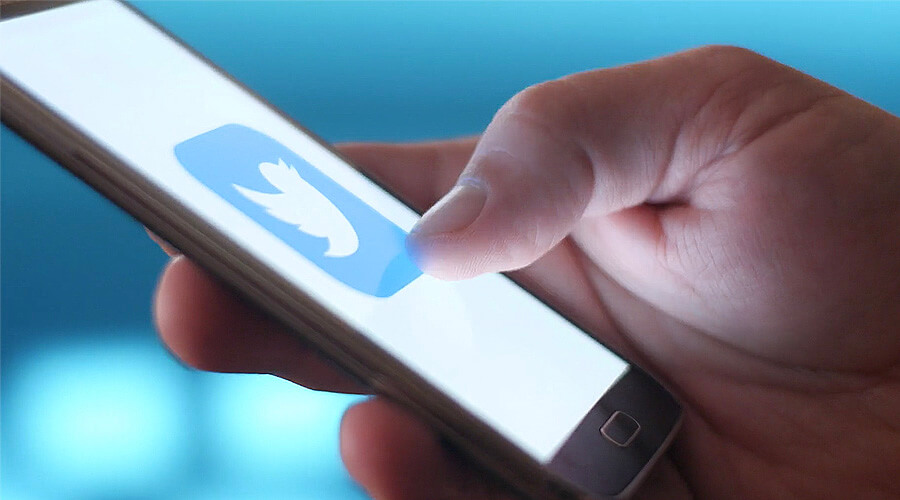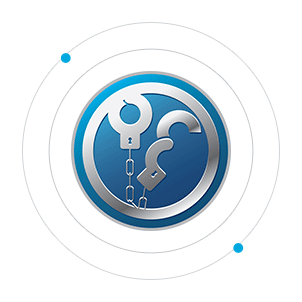The Most Dangerous Twitter Scams: How They Work
Are you vulnerable to scams through your use of social media, especially Twitter? How are you affected? Is the threat real? We'll find out the answers to these questions and more in this article. Twitter has 330 million monthly active users, half of which are using the app daily, so you are into a dangerous zone.
Let's take a look at some of the most notorious Twitter scams that you'll find out there.
Scam Detectors Most Trusted Websites in Online Security
- Guard.io (100): Surf the web safely. Clean up your browser, remove maliscious extensions and check for privacy violations.
- Incogni.com (100): Delete your personal data from the internet and protect against scams and identity theft.
- ExpressVPN (100) Stay secure and anonymous online - Best VPN Out There

1. Twitter Hack Account
Scammers will look to attack every aspect of your online presence. This doesn't leave out your inbox. In some variations of the scam, you'll be contacted directly via a hacked account. These messages will redirect you to malicious pages to steal your credentials and generate identity theft. If you're not careful, you may lose your account too. As soon as they have managed to hack your account, you're at their mercy, and they are free to use it for whatever they want. Here is how scammers successfully perform something that is called Twitter Hack Account.
Illegitimate direct messages are not only designed to steal your login details. They could also be direct messages from people trying to rip you off your money (see more information about messages below).
2. Twitter Blue Check Scam: How To Get Verified on Twitter
You probably noticed a Twitter blue check mark beside specific usernames. Those accounts are verified, confirming the users are the real celebrities using the app. However, scammers reach out to victims on social media and promote a $25 offer to get you a blue check mark on your profile within 24 hours. How can they do it? They'll ask for your credentials (username, password) and then log into your account. They'll take your header photo, which is the background image of your profile, open it in Photoshop, and paste a blue check mark by aligning it exactly where your username ends. Then they re-upload the picture on your profile, and …it's done! What does that mean?
When you change your background image, there won't be any blue check mark beside your name anymore.
3. Make Money Off Twitter
Many users are wondering how to make money off Twitter. This scam is usually enticing because, well, there's often some financial deals attached to it. Often, the scammer will entice users with a post that promises to give them money if they post other people's products. Those who fall for this scheme usually end up paying a certain amount of money to get their starter kit. The problem with this is that the starter kit actually never arrives, and you've just paid money for nothing. As an alternative, the scheme could be similar to the Money Flipping Instagram Scam.
Here is an example of a Twitter money give away scammer below:

For some more severe variations of this trick, you may be asked to input all your personal information, including address or social security number. You'll be initially charged for the transaction you've just approved. However, since they have your credit card information or account details, they could always charge you for something else. This is how they usually operate.
A lot of people have complained that even after paying for a non-existent starter kit, they ended up losing money from their accounts. This type of deductions may be done monthly or weekly, depending on your credit limit. Usually, the only solution would be for you to cancel the credit card or end up acquiring debt.
Watch the video below to see the Money Flipping Scheme:
4. Twitter Complaint
This is a genius approach from the scammers' perspective. People like to complain a lot, especially when behind a device, rather than face to face. So many of them take the complaints on Twitter, where they can tag the company and say how crappy a product was (e.g., “Hey [phone company], thanks for charging me an extra $8 last month!”). You've seen that before, right?
That's what a user called Andrea did too, complaining about the telecommunications giant Virgin, using Twitter. Pay attention here. She received a quick response from @virginCSmedia, whom she naturally assumed to be the customer service of Virgin, but in reality, it was a fake account. The tweet response asked for her name, address, and account number in the first instance to which she responded.
A new message was then sent saying that Virgin was having trouble locating her account so they would need some further information. The “customer service rep” asked for her date of birth and place of birth, which she provided. But here is more.
She then received a phone call from someone claiming to be a Virgin customer services agent. The person on the phone said that he needed to ask a security question first. As she was cooperating, he then proceeded to ask Andrea for the bank details of where her direct debit is paid, which is a common way of paying. Of course, she gave it away. Don't be Andrea.
5. Twitter Anniversary
This scam happens every year, whether it is Twitter's 10th anniversary or the 14th like it is now. Criminals contact thousands of people at once by tagging them and claim to be Twitter representatives. They inform the users about some great news: “To celebrate Twitter's 14th anniversary today, we give away 100 tablets to 100 lucky people! [your Twitter handle] was selected. Claim here [link]”. They provide a link to a contest page, where the victim is invited to put in the login credentials.
If the victim replies, the scammer takes the conversation away from Twitter. They move to email, where he could ask for more personal information. Once you provided all they need to receive the tablet, the conversation just ends with no way back.
The images and pages used by scammers are similar to the real Twitter branding style.
6. Attractive Twitter Profiles
Haven't we all seen those? Sexy girls in beautiful Twitter profiles. Well, never open a notification tweet of you coming from an account that has such a profile pic. Since Twitter doesn't allow users to send direct messages to somebody who is not following you, the cybercriminals tag you in their posts, to get your attention. The posts contain a link which, when opened, sends you to an adult site and downloads a virus into your device. Don't click on the link; just report the scammer. See the bottom of this article for the Report page.
If you click on the scammer's username, you'll notice that she/he has 0 followers, but 300 tweets.
7. Economic Stimulus Support
The COVID-19 crisis changed the way we think and protect ourselves, which made a lot of room for Twitter crooks to get into the game. In the Economic Stimulus Support Scam, criminals offer links with financial support to those interested, hashtagging well-known organizations such as the United Nations and Red Cross, so that the post seems legitimate.
However, unsuspecting victims click on the links provided eager to apply for temporary financial support, which in reality, all they do is giving away personal information, which leads to identity theft. You can find here a real list with Government grants for individuals in the United States, United Kingdom, Canada, and Australia – for all those who need help after the coronavirus hysteria.

8. Twitter Bot Spam
It's not every time that scammers contact you directly. Sometimes, these people may set you up with a bot that has been designed to mimic human interaction. The bots usually do all the hard work for them and help to protect their identity.
The bots have been in use for quite some time now, and you may never know that you're engaging with one. Usually, the purpose of the bot is to redirect the user to a malicious website where the desired information can be extracted. Even some of the tweets mentioned above (the nude women inviting you to another platform) are most likely a bot. When the user decides to interact with the bot, it will follow its program and offer the user access to an adult site. When you navigate to such a dangerous website, you'll be prompted to input your personal information, including card details. Don't make this mistake. Inputting your vital information could cost you a lot of money or could even lead to some identity theft.
Take note that bots do not always make use of only nude women or look to redirect you to an adult site. Bot spams are diverse as they can be programmed to suit different scenarios. There may be only one lurking around the corner.
9. Pay for Twitter Followers
Some bots are designed to handle the pay-for-followers scam, but it still qualifies as another type of twitter scam on its own.
There are many profiles online which promise to offer other Twitter users thousands of followers for a certain fee. These profiles usually promise to connect your account with others that will follow you back. Others will claim to connect you with followers who have similar interests to yours. Regardless of how it comes, these are only scams and won't increase your followers. They have nothing to offer you.
Anyone who engages these services will only be accused of helping to spread spam on different social media. This type of activity could cause Twitter to ban your account.
10. Twitter Worms
Worms may not be as popular as other online scams, but they are still a severe threat to you.
One of the prevalent cases online was the Mikeyy worm. This worm used Javascripts to infect the accounts of anyone who clicked on an infected account. Any other user who clicks on an infected account catches the worm too. The cycle goes on and on. Numerous tweets will be generated by the account, which contains a shortened link. If clicked, this link would redirect to you a malicious website that would infect you with something similar.
The Mikeyy Worm affected numerous accounts in the past. Luckily, attacks by Twitter worms have reduced in the last few years. However, an XSS-based worm still infected thousands of Twitter users recently. This means that an attack is still very much possible today.
Social media users should take note that not all attacks on your account are personal. Sometimes, the attacker preys on the predictable activity of people online, such as meeting new people online or responding to posts. They have found ways to utilize these means to exploit people and rip them off the money. These scammers may even take control of your account and use it to attack any unsuspecting friends of yours.
There's a need to be extra careful as anyone can fall victim to a Twitter scam. It doesn't take much. To safeguard yourself, you must arm yourself with the right information. These scams usually vary from one social media platform to another, but the underlying principle is often the same.
How to Report a Scammer on Twitter
Warn your family and friends about the Top 10 Twitter Scams by sharing this article on social media using the buttons provided. You can also officially report the scammers directly to Twitter or to the Federal Trade Commission using the links below:
How To Prevent Identity Theft and More
If you want to be the first to find out the most notorious scams every week, feel free to subscribe to the Scam Detector newsletter here. You'll receive periodic emails – we promise not to spam. Meanwhile, educate yourself with some other fraud-related articles right under this paragraph, so that you can protect yourself in many other aspects and niches. Last but not least, use the Comments section below to expose other scammers.
Here are some must-reads for the end:
Administrative Assistant Job Scam
Dog Walking Jobs Scam
Verify a website below
Are you just about to make a purchase online? See if the website is legit with our validator:
vldtr®


TOP 4 MUST-WATCH FRAUD PREVENTION VIDEOS
1. Top 5 Amazon Scams in 2024 2. Top 5 PayPal Scams in 2024 3. How To Spot a Scam Email in 2024
- Latest Posts by Selma Hrynchuk
-
Compromised Credit Card Scam
- -
Fake Google Chrome Update
- -
Facebook Privacy Notice Hoax
- All Posts














Twitter Scams from these email accounts …
[email protected] claims to be a millionaire in Twitter.
[email protected] forged check scam and credit card scam.
im doing a gofundme page and have had some reponses from diffrent user pages that tell me to send an email to a [email protected] and a [email protected] asking me for a tranfer fee or a refundable fee i believe these are scams and should be looked into incase there taking avantage of your users
I just got the same from [email protected] for our gofundme campaign.
Yup I setup gofundme for help with my dogs medicine and vets while i go through a bit of a mental breakdown from childhood trauma and I’ve had one from Harryinc. I’m just telling everyone to use my Gofundme if they want to help.
@PS5UPDATESx on Twitter is a scam.
beware of a guy called Jow White Smile on Twitter, with handle @joe1129011. Money flipping guy!!